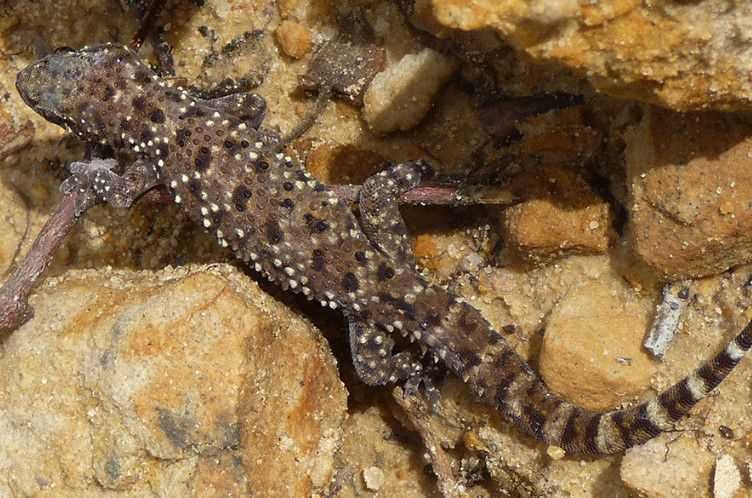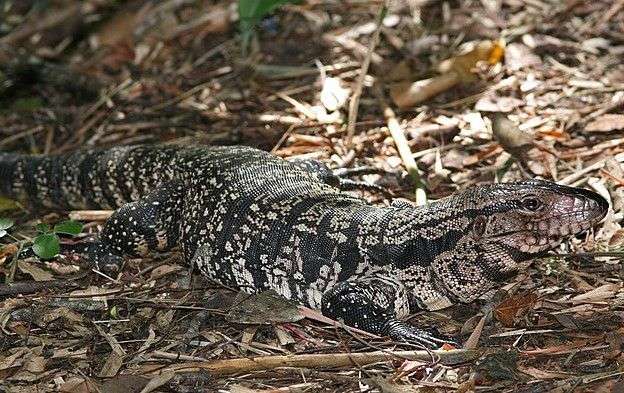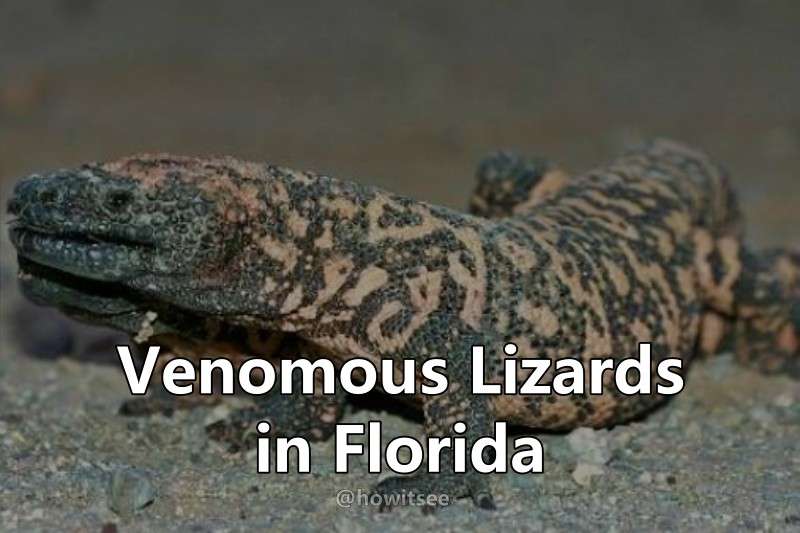More than 5,000 lizard species are still around today. Venomous lizards in Florida are very rare to find. Their capacity to survive in some of the most extreme environments in the animal kingdom is equally impressive, as is their enormous diversity.
Lizards are primarily venomous than poisonous. Reptiles, from the tiniest gecko to the giant monitor lizard, are intriguing regarding body plan, reproduction, diet, and other characteristics.
Fortunately, only a tiny percentage of lizard species are venomous. On the other hand, current research has shown that there are many more species of venomous lizards than were previously recognized.
Some species can produce toxic compounds even if they cannot inoculate venom into prey.
To see some of Earth’s most exciting and potentially lethal animals, check out this list of Florida’s most poisonous (venomous) lizards.
Top 5 Poisonous (Venomous) Lizards in Florida
5) Anole Lizards

| Scientific Name | Anolis carolinensis, Anolis sagrei, Anolis equestris |
| Size | 5-8 inches |
| Life Span | Up to 8 Years |
| Location | Southeastern United States, particularly in Florida. |
| Toxicity | Green Anoles are not toxic or venomous, but delivers painful bites and carry various pathogens that are harmful. |
Here, in this explanation, we are counting all Anole Lizards that found in Florida from Green Anole to Brown & Knight Anole. So, below we have explained a little bit about each Anole Lizard.
Green Anole:
The green anole (Anolis carolinensis) is a species of anole lizard found in the southeastern United States and introduced to islands in the Pacific and Caribbean.
Green anoles are small to medium-sized lizards that may change their coloration from brown to green through a trunk-crown ecomorph.
The green anole is a slim lizard ranging from tiny to medium. Long and tapering at the crown, with small ridges between the eyes and nostrils.
Climbing is made more accessible by the sticky pads on the toes. They are sexually dimorphic, with males being 15% bigger than females.
It is possible to divide adult males into heavyweight and lightweight morphs within a population. Males have a larger and brighter orange to pink dewlap (throat fan) than females.
Brown Anole:
Common names for the brown anole (Anolis sagrei) include Cuban brown anole and De la Sagra’s anole. The Bahamas and Cuba are the species’ natural habitats.
The anole was initially discovered in Florida but has since been widely dispersed because of international trade in plants where the animals could lay their eggs in the potting soil.
The brown anole’s typical coloration is a relatively light brown, with darker brown to black patterns on its back and several tans to light hue lines along its flanks.
It’s capable of metamorphosis, like other anoles, going from a darker brown to black. Its dewlap can be anywhere from yellow to a fiery orange.
The length of a typical brown anole ranges from 5 to 8.5 inches. Males can reach heights of 17.8-20.3 cm (7.0-8.0 in) and even 22.9 cm (9.0 in) in extreme cases, making them almost the same size as male Carolina anoles (9.0 in).
The females are roughly the same size as female Carolina anoles, which is to say, between 7.6 and 15 cm (3.0–5.9 in). The brown anole’s head is noticeably smaller than the male Carolina anole.
Knight Anole:
Anolis equestris, sometimes known as the “knight anole,” is the largest species in the family, Dactyloidea. This massive anole is known as a “chupacocote” in its native Cuba.
Other common names for this species, which emphasize its home in Cuba but have also been brought to Florida, include Cuban gigantic anole and Cuban knight anole.
Mature knight anoles are between 13 and 20 inches (33-51 centimeters) long (including their tail, which is longer than their head and body combined) and weigh between 0.5 and 4.83 ounces (16–137 g).
The adult snout-vent length of males is 3.9-7.5 inches (10-19 centimeters), whereas that of females is 3.5-6.3 inches (9-15 centimeters) (9–16 cm).
It can change colors and is predominantly green except for a yellow stripe on the side of its head and another on its shoulder. The dewlap is a rosy white color. Bright bands decorate the bodies of juveniles.
4) Mediterranean Gecko

| Scientific Name | Hemidactylus turcicus |
| Size | 4-5 Inches |
| Life Span | 5-10 Years |
| Location | Mediterranean region but have also been introduced to other parts of the world, including the United States, where they are now established in Florida, Georgia, Alabama, and other southeastern states. |
| Toxicity | Mediterranean geckos are not toxic and pose no danger to humans. But they carry pathogens in their bodies which cause food-poisoning after consuming the contaminated foods. |
The Hemidactylus turcicus, or Mediterranean house gecko, is a species of house gecko native to the Mediterranean region that has since become widespread. The Turkish gecko is also known as the moon lizard because it only comes out at night, hence its Latin name.
According to research conducted in Portugal, H. turcicus is entirely nocturnal, with activity levels peaking at around 02:00. Insectivorous, with a maximum length of about 15 centimeters (5.9 inches), they feature huge, lidless eyes with elliptical pupils, skin that is either purple or brown with black markings, and sometimes even a striped tail.
These have relatively see-through undersides. What effect the geckos have on native species in areas where they have been introduced is still unknown.
The Mediterranean gecko is a small lizard that grows to a maximum length of around 10-13 cm (4-5 inches). It has wide eyes that do not have eyelids, sticky pads on its toes, and vertical pupils.
Rounded snout, measuring 1.25–1.3 the diameter of the orbit; somewhat concave forehead; ear opening that is oval but oblique; ear opening that is nearly half the diameter of the eye. Moderateness of body and limbs.
3) Black and White Tegu

| Scientific Name | Tupinambis merianae |
| Size | 4 Feet in length |
| Life Span | 20 Years |
| Location | Native to South America, Invasive Species In Florida |
| Toxicity | Its strong jaws and sharp teeth can deliver a painful bite, although it is not poisonous. |
Tegus can run relatively fast and even briefly run on two legs. They do this to appear more intimidating when defending their territory.
Mature males can grow 3 feet (91 cm), nearly twice as long as females. They can reach 4.5 feet or longer (120–140 cm). Occasionally, people will keep tegus as pets.
As a bonus, they can be housetrained and have extraordinarily high intelligence. Like many other reptiles, when the weather cools off in the fall, tegus enter a hibernation called brumation.
During their awake time of the year, they are pretty active. To our knowledge, they are the only reptiles that exhibit endothermic behavior.
2) Nile Monitor

| Scientific Name | Varanus niloticus |
| Size | 7 Feet in Length |
| Life Span | 15-24 Years |
| Location | Africa, Not Native but is Introduced In Florida |
| Toxicity | Nile Monitors are not venomous but have bacteria in their mouth that can cause infection if bitten. |
In Africa, the Nile monitor stands out as the longest of the lizard species. Their average length is about 120 cm (3 ft 11 in), with the most extended individuals reaching 244 cm (7 ft 3 in) (8 ft). The length from head to tail in a typical example is about 50 centimeters (1 ft 8 in).
The reported weights of adults span a broad range, from 0.8 to 1.7 kg (1.8 to 3.7 lb) in one study to 5.9 to 15 kg (13 to 33 lb) in another, especially among large monitors. Age and environmental factors can also play a role in producing variation.
1) Gila monster

| Scientific Name | Heloderma suspectum |
| Size | 12-24 inches (Around 60 cm) |
| Life Span | 10-20 Years |
| Location | Florida in Southern US and Northern Mexico |
| Toxicity | Highly Venomous |
It is the first venomous lizard in Florida. The Gila monster, or Heloderma suspectum, lives in dry, sandy areas in northern Mexico and the southern United States.
Around 60 centimeters in length, they also tend to be stocky. Because of this, they can only move slowly. Their legs may be tiny, but their claws are formidable. They have black or brown scales with pink, yellow, or white patterns.
They are a carnivore that prefers to eat rodents, birds, snakes, insects, frogs, and eggs. In their native Mexico, as well as elsewhere, they are protected as a result of their status as a vulnerable species.
Conclusion
According to the report, some lizard species in Florida are venomous. Florida’s top 10 toxic lizards, habitats, and bites are discussed. These lizards only bite when threatened. To avoid damage, avoid touching them. The essay educates readers about Florida’s deadly reptiles and stresses wildlife conservation.
References:
- Wikipedia
- Animal Wised
- AZ Animals
-
Beware Of The Poisonous Lizards In Florida!
Also Read:

A writer who studied agriculture. Nature has always drawn me in, and my main goal in writing about it is to discover some of its secrets. You can usually find me reading Bengali and English masterpieces or filling the room with lovely music if I’m not engrossed in nature or anime material. I adore playing the guitar. I’m also that friend of yours who enjoys playing video games.
